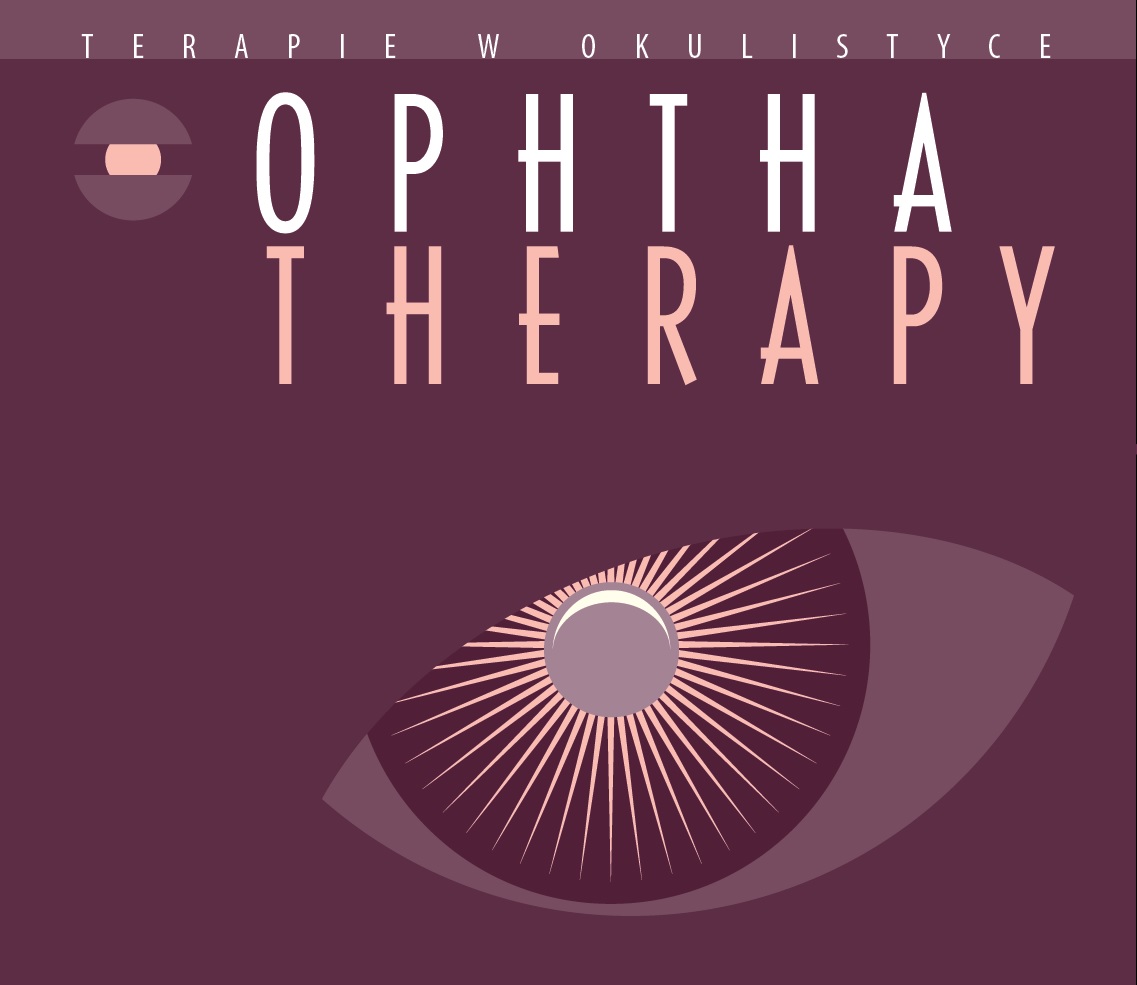Wpływ stwardnienia rozsianego na widzenie i motorykę oczu. Rola okulistów, ortoptystów i optometrystów w postępowaniu i leczeniu pacjentów ze stwardnieniem rozsianym Artykuł przeglądowy
##plugins.themes.bootstrap3.article.main##
Abstrakt
Stwardnienie rozsiane ma wieloraki, negatywny wpływ na widzenie i może stać się przyczyną niepełnosprawności wzrokowej. Oprócz znanego wszystkim i charakterystycznego objawu okulistycznego, jakim jest zapalenie nerwu wzrokowego, omówiono zaburzenia ruchów gałek ocznych z najczęściej występującą obustronną oftalmoplegią międzyjądrową. Autorka opisała w niniejszej pracy liczne zaburzenia widzenia występujące w stwardnieniu rozsianym ze szczególnym uwzględnieniem motoryki oczu oraz roli specjalistów zajmujących się wzrokiem w opiece nad pacjentem ze stwardnieniem rozsianym.
Pobrania
##plugins.themes.bootstrap3.article.details##

Utwór dostępny jest na licencji Creative Commons Uznanie autorstwa – Użycie niekomercyjne – Bez utworów zależnych 4.0 Międzynarodowe.
Copyright: © Medical Education sp. z o.o. License allowing third parties to copy and redistribute the material in any medium or format and to remix, transform, and build upon the material, provided the original work is properly cited and states its license.
Address reprint requests to: Medical Education, Marcin Kuźma (marcin.kuzma@mededu.pl)
Bibliografia
2. Rowe F. Clinical Orthoptics. 3th ed. Wiley-Blackwell Chichester, West Sussex 2012.
3. Ramagopalan SV, Dobson R, Meier UC et al. Multiple sclerosis: Risk factors, prodromes, and potential causal pathways. Lancet Neurol. 2010; 9(7): 727-39.
4. Walton C, King R, Rechtman L et al. Rising prevalence of multiple sclerosis worldwide: Insights from the Atlas of MS. 3th ed. Mult Scler. 2020; 26(14): 1816-21.
5. Compston A, Coles A. Multiple sclerosis. Lancet. 2008; 372: 1502-17.
6. Polman CH, Reingold SC, Banwell B et al. Diagnostic criteria for multiple sclerosis: 2010 revisions to the McDonald criteria. Ann Neurol. 2011; 69: 292-302.
7. Hickman SJ, Dalton CM, Miller DH et al. Management of acute optic neuritis. Lancet. 2002; 360: 1953-62.
8. Stępień A. Neurologia, tom III. Medical Tribune Polska, Warszawa 2011: 183-195.
9. Balcer LJ, Miller DH, Reingold SC et al. Vision and vision-related outcome measures in multiple sclerosis. Brain. 2015; 138(1): 11-27.
10. Witowska-Jeleń E. Zdjęcie dna oczu pacjenta z zapaleniem nerwu wzrokowego. 2025. Materiał własny. ORTO-OPTICA.
11. Roodhooft JM. Ocular problems in early stages of multiple sclerosis. Bull Soc Belge Ophtalmol. 2009; 313: 65-8.
12. Barnes D, McDonald WI. The ocular manifestations of multiple sclerosis. 2. Abnormalities of eye movements. J Neurol Neurosurg Psychiatry. 1992; 55(10): 863-8.
13. Morris N, Rowe FJ. Ocular motility disturbances in multiple sclerosis. British and Irish Orthoptic Journal. 2007; 4: 31-6.
14. de Seze J, Vukusic S, Viallet-Marcel M et al. Unusual ocular motor findings in multiple sclerosis. J Neurol Sci. 2006; 243(1-2): 91-95.
15. Józefowicz-Korczyńska M, Pajor AM. Evaluation of the smooth pursuit tests in multiple sclerosis patients. J Neurol. 2011; 258: 1795-800.
16. Heath G, Airody A, Gale PR. The Ocular Manifestations of Drugs Used to Treat Multiple Sclerosis. Drugs. 2017; 77: 303-11.
17. Bet-Shlimon S, Etienne M. Isolated Abducens Palsy as the First Presenting Sign of Multiple Sclerosis. Case Rep Neurol. 2017; 8(3): 272-5.
18. Peters GB, Bakri SJ, Krohel GB. Cause and prognosis of nontraumatic sixth nerve palsies in young adults. Ophthalmology. 2002; 109: 1925-8.
19. Courtney EF. Visual Issues in Multiple Sclerosis. Physical Medicine and Rehabilitation. Clin N Am. 2013; 24(4): 687-702.
20. Neurookulistyka seria 5. BCSC Basic and Clinical Science Course. Byszewska A, Rękas M (eds.). Edra Urban & Partner, Wrocław 2022.
21. Gómez Iglesias P, Sanesteban Beceiro E, Gómez Ruíz MN et al. Half and half syndrome as a presentation of multiple sclerosis. Neurologia. 2021; 36(3): 246-8.
22. Quint DJ, Cornblath WT, Trobe JD. Multiple sclerosis presenting as Parinaud syndrome. AJNR Am J Neuroradiol. 1993; 14(5): 1200-2.
23. Serra A, Chisari CG, Matta M. Eye Movement Abnormalities in Multiple Sclerosis: Pathogenesis, Modeling, and Treatment. Front Neurol. 2018; 9: 31.
24. Brodsky MC, Donahue SP Vaphiades M et al. Skew Deviation Revisited. Surv Ophthalmol. 2006; 51: 105-28.
25. Druckman R, Ellis P, Kleinfeld J et al. Seesaw Nystagmus. Arch Ophthalmol. 1966; 76(5): 668-75.
26. Singh RP, Singh AD. Chapter 63. Ocular paraneoplastic diseases. In: Clinical Ophthalmic Oncology. Singh AD, Damato BE, Pe’er J et al. (eds.). W.B. Saunders, 2007: 378-84.
27. Smith KJ, McDonald WI. The pathophysiology of multiple sclerosis: The mechanisms underlying the production of symptoms and the natural history of the disease. Philos Trans R Soc Lond B Biol Sci. 1999; 354(1390): 1649-73.
28. Alao AO, Hanrahan B. Charles Bonnet syndrome: visual hallucination and multiple sclerosis. Int J Psychiatry Med. 2003; 33(2): 195-9.
29. Hickman SJ, Raoof N, McLean RJ et al. Vision and multiple sclerosis. Mult Scler Relat Disord. 2014; 3: 3-16.
30. Jenkins PF. The Multiple Facets of Multiple Sclerosis. Am Orthopt J. 2017; 57(1): 69-78.
31. Tarakci E, Yeldan I, Huseyinsinoglu BE et al. Group exercise training for balance, functional status, spasticity, fatigue and quality of life in multiple sclerosis: a randomized controlled trial. Clin Rehabil. 2013; 27(9): 813-22.
32. Beer S, Khan F, Kesselring J. Rehabilitation interventions in multiple sclerosis: An overview. J Neurol. 2012; 259: 1994-2008.
33. Buck D, Hemmer B. Treatment of multiple sclerosis: Current concepts and future perspectives. J Neurol. 2011; 258: 1747-62.
34. Cross AH, Naismith RT. Established and novel disease-modifying treatments in multiple sclerosis. J Intern Med. 2014; 275: 350-63

